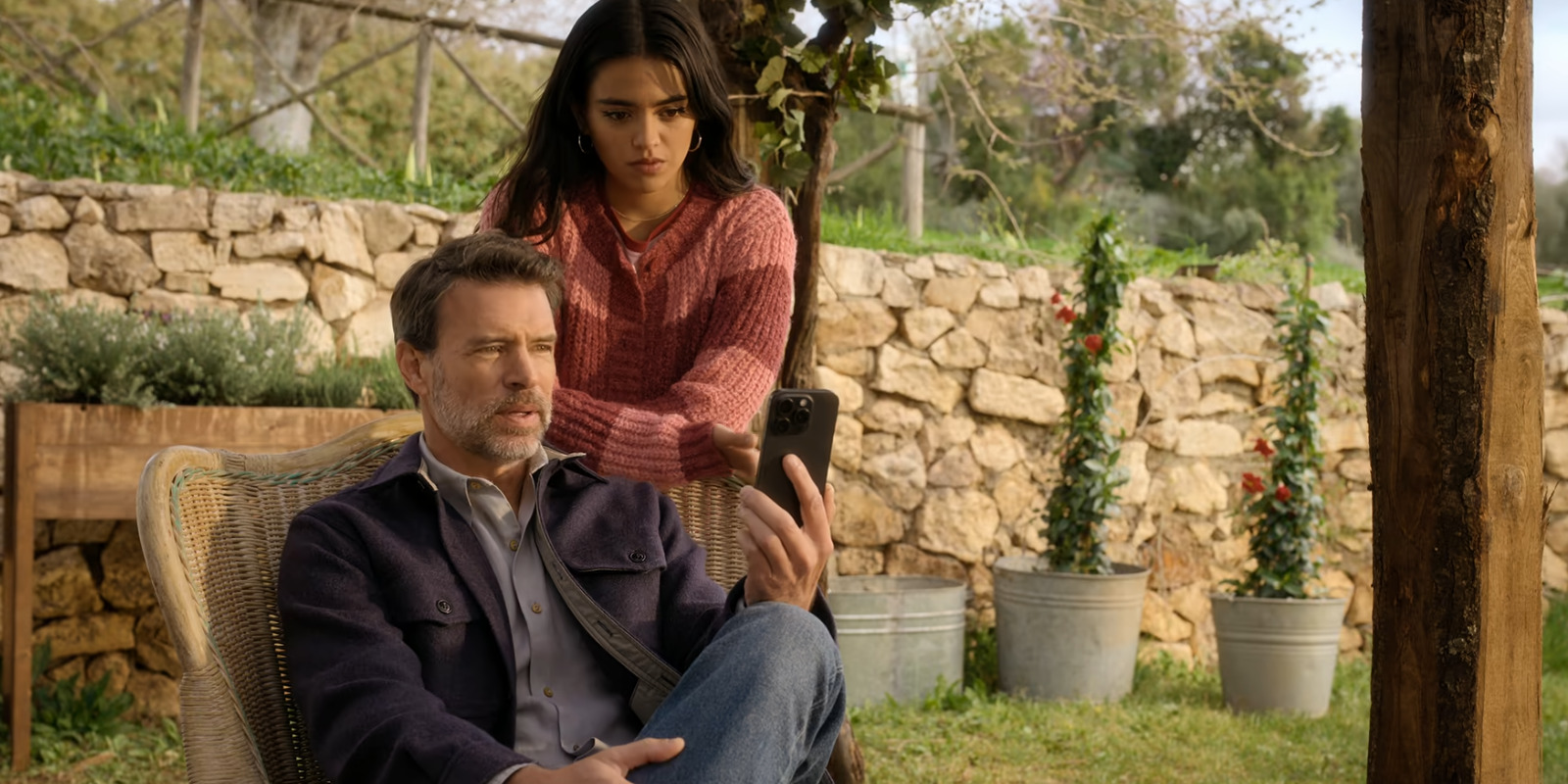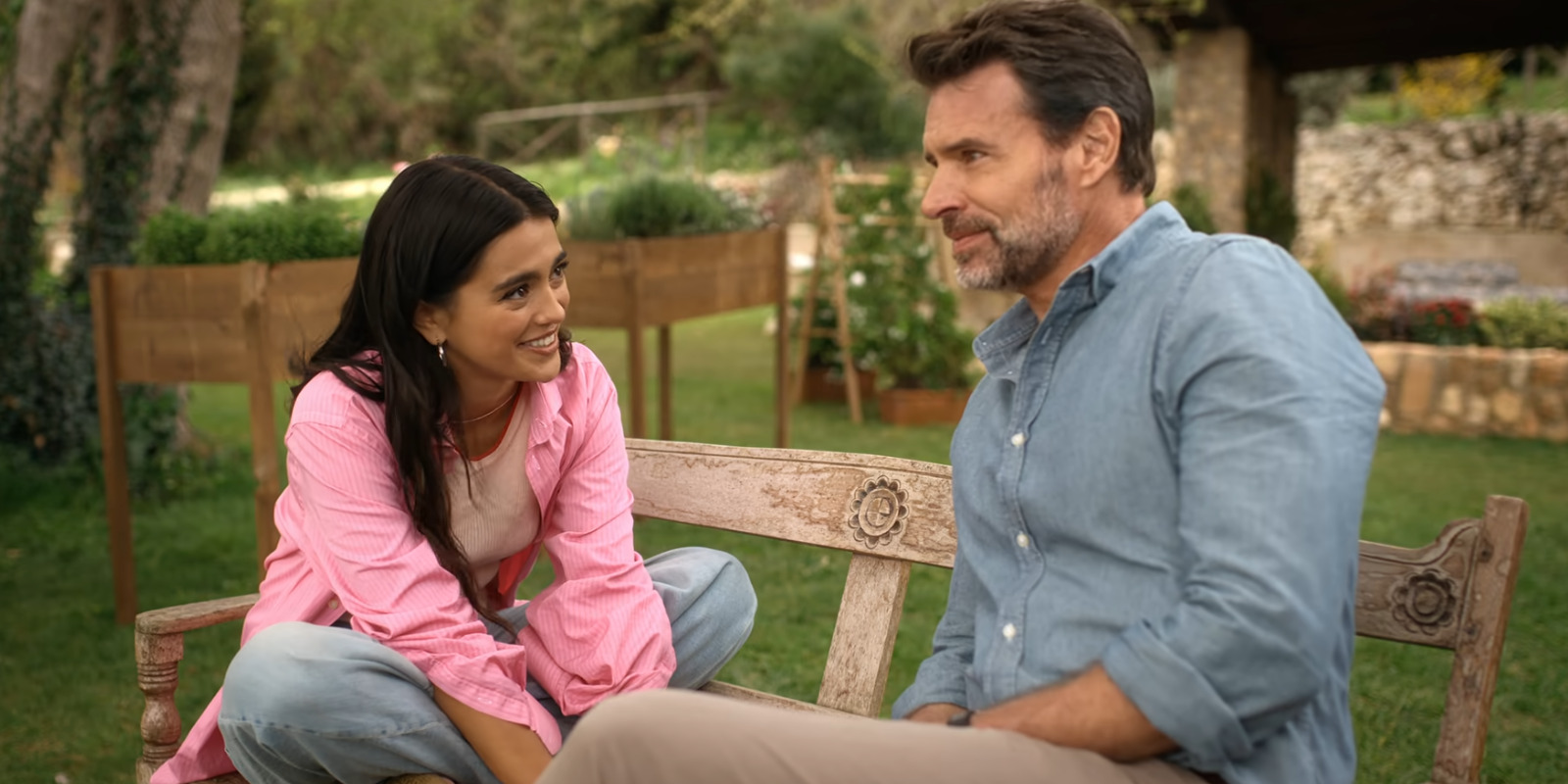‘La Dolce Villa’ is a feel-good film in which a small Italian town becomes the backdrop for the restoration of a father’s zest for life as he repairs his relationship with her daughter. When Olivia decides to move away to Italy to buy a dilapidated but promising villa in a small town in her 20s, it inevitably invites the distrust of her father, Eric. As a result, the latter ends up following his daughter to the Italian town to change her mind about making—what he deems to be—a colossal mistake. Yet, the Italian countryside has different things in store for the man, opening up a world of new possibilities, including even perhaps a second chance at romance.
This Mark Waters directorial offers a delightful tale about subverting expectations and finding happiness in the right places at exactly the right time. The narrative remains ripe with relatable familial themes and dynamics with a father-daughter relationship at its center. Consequently, the story’s sense of realism is bound to attract some intrigue.
La Dolce Villa is a Fictional Story About a Real-Life Project
The base premise of ”La Dolce Villa” is a fictionalized tale confined within the parameters of screenwriters Elizabeth Hackett and Hilary Galanoy’s screenplay. Eric Field’s wild and unexpected adventure of soul searching in Italy, which ultimately brings him closer to his daughter, is entirely a work of fiction. Therefore, it possesses no direct counterparts in real life in terms of characters or events. However, despite its fictionality, the Field family’s story holds some connection to reality. In the film, Olivia is compelled to uproot her life and move to the town of Montezara because she finds a unique opportunity to buy a villa within the area for just the symbolic price of €1.

Even though the house is in desperate need of a makeover, the offer remains a steal, prompting OIivia’s life-changing decision and her father’s well-balanced doubt. As it turns out, this incredible initiation is actually a real-life project many Italian small towns have adopted. In recent years, such small towns in Italy have found themselves facing a sharp decline in population. This is mostly a result of the younger generation’s preference for the life and opportunities that cosmopolitan cities offer. However, due to the same reason, the older generation has found themselves without anyone to whom they can pass off their houses and villas.
Consequently, many properties have been bequeathed to the local authorities, who have concluded that selling these houses for €1is the best way to fix up the local economy and population. Even though buyers—usually out-of-towners—can buy the properties for this incredibly cheap price, they tend to require some more investment via renovations. Ultimately, the 1 Euro House project remains an effective effort to stimulate the economies of small towns and communities while also hopefully boosting tourism.

Aside from these fiscal and economic benefits, the initiative also offers a new start for many people, presenting them with the opportunity to become homeowners and find their forever homes. ‘La Dolce Villa’ builds upon this same idea, crafting a compelling family story around the concept of restoring a house together as a unit. Additionally, it brings to life the various quirks of small Italian towns. In order to ensure authenticity in its geographical depiction, the film employed real Italian towns as the primary filming location. Therefore, ultimately, Olivia and Eric’s fictional narrative retains substantial roots in reality.
La Dolce Villa Centers Around Realistic Relationship Dynamics
Although ‘La Dolce Villa’ doesn’t sport any significant ties to reality outside of the concept of 1 Euro Houses, the film still holds onto a sense of realism, especially when it comes to interpersonal character dynamics. The story has numerous relationships between a variety of characters, including bonds of friendship, romance, family, or just simple neighborly acquaintance. These elements highlight the relatability of each character and their situations, adding authenticity to their storylines. This stays true for most relationships, including the central romances between Eric and the town mayor, Francesca, or Olivia and Giovanni. Yet, the father-daughter bond between Eric and Olivia shines through most prominently in its realism.

Throughout the film, Oliva and Eric’s relationship goes from an estranged and fleeting connection to a strong bond. The duo’s standing at the beginning is a result of the distance between the death of Eric’s wife and Olivia’s mother, which has cleaved between the two. Therefore, their dynamic remains universally familiar from the get-go. Yet, the performances of Scott Foley and Maia Reficco and their easy chemistry significantly inform the authenticity of their characters.
As a father of three young kids, Foley understood Eric on an intrinsic level, which heightened his connection to the fictional character. Similarly, Reficco’s bond with her own large family helped her bring Olivia’s complex character to life. “A lot of the scenes that we had where we talk about the passing of her mom and how we dealt with it, I was always sort of looking at [Reficco] as my daughter, if you will, which she played in the movie, of course,” Foley told ComingSoon.net. “It brought another level of emotion to it, which I was so thankful for.”
Read More: Where Was Netflix’s La Dolce Villa Filmed?


You must be logged in to post a comment.